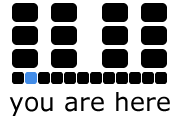Rhetorical Situation
by Jentery, Curtis, Matthew & Jamie
In the broadest sense, inquiring into the “rhetorical situation” of metadata and new media composition requires approaching the problems and affordances of social tagging systems through the terms and communicative frameworks supplied by rhetorical analysis. Speaking directly from this perspective Jamie provides us with the most readily accessible entry-point to these questions. The definition of “rhetorical situation” which he culls from the work of Lloyd Bitzer nicely outlines the important relationship that the term itself invokes in composition and rhetoric fields. On one hand, “rhetorical situation” designates a “context” or a “set of circumstances”—the “various factors which help shape” the construction and reception of texts. But equally important is the way that rhetorical situations in themselves “invite” or “call discourse into action.” But what is the nature of the rhetorical situations which define and shape the uses (and abuses) of metadata as discourse? And what sort of discourse is metadata in the first place?
On these questions, Jamie’s analysis of the Flickr Commons Project reveals a useful tension. Taken at face value, metadata is most commonly understood as merely “descriptive,” and in this sense, “disinterested, noncritical, and arhetorical.” From this angle metadata can be said to describe “the underlying features of the object’s rhetorical situation”— “external to the rhetor,” it merely provides the context in which the object itself operates as a statement. In this case, what metadata “describes” is exactly the rhetorical situation of the object, determining, in effect, the way that the object itself can be “read” and understood as generating its own meanings But he also argues that folksonomies like the one mobilized in the Flickr Commons Project are perhaps better understood as encouraging metadata that operates toward “patently rhetorical” ends with its own rhetorical situation – a context which “must be understood in order to reach a useful rhetorical analysis” of metadata itself as a type of discourse in and of itself. The tension: metadata “describes” the rhetorical situation of its objects of reference and can also be understood as an “argument” which therefore has its own distinct rhetorical situation.
As Jentery notes, one clear point of consensus across our analysis is the argument that “metadata is not merely descriptive.”
“To compose it is to make a claim. To tag an object with a date, a place, a subject, or cultural formation is to argue how the object should be archived and subsequently located within that archive. Tagging is also more than a matter of situating an object. It is the shaping of future interpretations.”
This reading strongly insists upon one side of the tension described above; to understand metadata as an argument is to maintain that it does more than “situate” or describe the transparent context for a given object’s composition and reception. Here (and in all of our analyses) metadata is certainly more than a transparent and unbiased transcription of the objects rhetorical situation. As a point of consensus, this characterization of metadata as argument constitutes one of the foundations upon which our collective understanding of SITM is based.
Simultaneously though, Matt has argued that the constraints imposed by the automatic standardization of metadata by the platform in which it is composed must be understood as a “situation” which “fixes the possibility for reading the artifact” as anything other than “descriptive.” Curtis, expanding out of this insight, argues that it is from within this context that metadata mounts arguments designed to impose a categorical impulse upon the object in question and, ultimately, define and delimit how it might be inserted into existing knowledge systems.
“… the arguments that metadata stages are not simply about what the object “is” but what it belongs to, in what sequence, according to what logics, and in relation to what knowledge projects.”
To convert these two perspectives into terms more appropriate to our emphasis here, we might say that the rhetorical situation of metadata affords a series of counter-posed arguments that each define different situations for the object being described. In this sense, metadata stages arguments about an object’s “rhetorical situation” while simultaneously emerging from its own situation of constraints and affordances, therefore occupying both ends of the previous tension. It is essentially a situated discourse that argumentatively defines (through “description”) other situations of discourse.
Across these tensions and differing interpretations, our meditations collectively suggest that the concept of “rhetorical situation” provides a variety of potential opportunities to describe both the situation and the discursive “work” that metadata performs in new media contexts. For our “Standards in the Making” approach, the concept demands that we understand the “standards” that are “made” as emerging from their own patterns of constraint and freedom. And for the new work of composing, it insists upon the recognition of metadata as a situated discursive practice unto itself.
